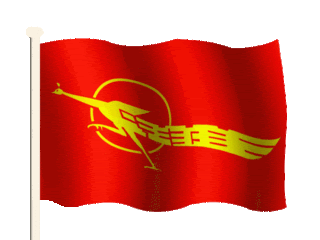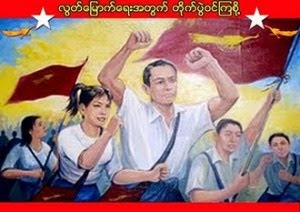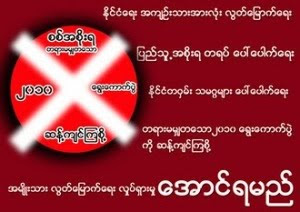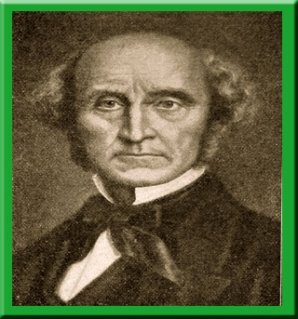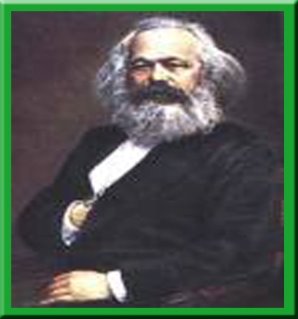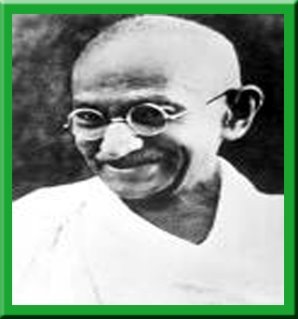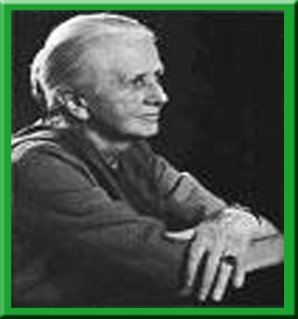The obstacles and possible routes to co-operation over
International Collective Action problems
Introduction
International collective action problems make economics and politics to come closer together to analyze how people and states can work together, how decisions can be taken for co-operation and how institutions can be created to implement those decisions. As the collective action problems involve political processes of co-operative action and material and strategic incentives, the concepts of public goods and game theory to explore the obstacles to, and possible routes to co-operation over international collective action problems.
In this essay, I would like to discuss about the concept of public goods, the nature of international collective action problems and show how game theory can help to model and analyze such problems. Specifically, I would like to analyze about the dynamics of collective action problems and the obstacles and routes to co-operation by using game theory matrices and evaluate what games do and do not reveal about international collective action problems.
Public goods
A public good is a good or service the consumption of which by one individual does not prevent its consumption by other individuals. Examples include lighthouses, pavements, flood-control dams, public drainage, public services such as the police, the army and even government itself.
Sloman (1999) identified two important characteristics of public goods as
Non-rivalry where the consumption of a good or service by one person will not prevent others from enjoying it. If public goods were sold privately, they would have large external benefits relative to private benefits. Thus, this makes them socially desirable, but privately unprofitable.
Non-excludability where it is not possible to provide a good or service to one person without it thereby being available for others to enjoy. So people would get the benefits free without any incentives and may create the free-rider problems.( Sloman, 1999: 332)
With these two features, the free market does not provide public goods and these goods can be provided only by the government. The degree of 'publicness' can be restricted by some limitations. Hardwick and Khan (1992) categorized these limitations into two groups such as
Spatial limitations : The degree of 'publicness' may depend on the geographical area which a given public good is able to benefit.
Capacity limitations : The number of people able to enjoy a public good is dictated by the limits of its capacity. (Hardwick & Khan, 1992: 210)
In short, the greater the extent to which a good or service shows the characteristics of non-rivalry and non- excludability, the greater the degree of 'publicness'.
Unlike private goods, the number of people participating in the enjoyment of public goods is generally very large and there exists no identifiable unit of measurement for many public goods. Also the benefits are diffused and widespread so that the most efficient unit of supply should be the government.
Although most of the public goods are classified as positive externalities, some of them are
characterized by negative externalities also known as public bads. Examples of these include international tension resulting from a doubling of defence spending by one country, smoke and noise from vehicles, aeroplanes and factories creating air pollution and discomfort; nuclear tests polluting the environment and exposing human life to radioactive fallout.
Collective action problems
Collective action occurs when more than one individual is required to contribute to an effort
in order to achieve an outcome. Frequently, it is difficult to exclude non-participants from benefiting from the collective action of others. This situation creates a collective action problem for the benefits.
In fact, when individuals seek out short-term benefits for themselves alone, they are better
off when others contribute to the collective action and they do not. As a result, they benefit without paying the costs. So if all individuals pursue short-term, self- centred benefits, no collective benefits are achieved. Ostrom (2004) claimed that as individuals are unable to overcome the temptation to pursue short-term, “selfish benefits”, the tendency to act in individual self-interest has become a barrier to securing the benefits of co-operation.
A classic statement called 'Tragedy of the Commons' displays the clear example of collective action problem. It offers an explanation for the tendency for open-access resources to be exploited and the main theme of the problem is 'overfishing' that leads to fish stock depletion. Unlike pure public goods, the commons are resources of local or international importance, the benefits from which are shared by everyone but owned by on one, and which are depletable in the face of intensive use. (Mehta & Roy, 2004: 420) As 'overfishing' problem involves international aspects, it exhibits a global common and single state regulations cannot result a proper solution to it. As a result, there is an interdependence in decision making for every country involved in this problem. Apparently, when the actions of one party perceptibly affect the welfare of another and vice versa, and all parties act in the knowledge that this is the case, the situation can become a situation of strategic action. Theoretically, game theory was developed to model these kinds of strategic situations.
Game Theory
Game theory is the formal study of conflict and co-operation. Its concepts apply whenever the actions are several agents are interdependent. It was established as a field after the 1944 publication of the volume Theory of Games and Economic Behavior by mathematician John von Neumann and economist Oskar Morgenstern.
The internal consistency and mathematical foundations make the game theory a prime tool for modelling and designing automated decision-making processes in interactive environments. As a mathematical tool for decision-maker, this theory provides for structuring and analyzing problems of strategic choice. A game situation may involve several players. A co-operative game is a high level description, specifying only what payoffs each potential group, or coalition can obtain by the cooperation of its members. (Turocy & Stengel, 2001: 6) Nash developed a cooperative game theory to investigate such coalitional games regarding to the relative amounts of power held by various players, or how a successful coalition should divide its proceeds. His model fits within a co operative game framework that focuses on the outcomes of the bargaining process.
As strategic interaction arises in a wide range of settings of interests, game theory has been applied in several disciplines such as nuclear arms race, economics, politics, sociology, international relations, philosophy, biology and so on. These kinds of branches of game theory differ in their assumptions. However, a central assumption in variants of many game theory is that players are rational. So the goal of game theory is to predict how the game will be played by rational players. In the next section, I would like to focus on the formal game theoretic models and the applications of game theory to the collective action problems with specific examples.
Game theoretic models
The classic model used by game theorists to analyze the problem of collective action is the Prisoners' Dilemma. It is one of the games used to demonstrate that the social optimum is not automatically realized by self-interest players so that this type of game can be called as a collective action game. The obvious characteristics of the Prisoners' Dilemma include
● a game in which there is a co-operative strategy as well as a cheating strategy
● a game in which there is a Nash equilibrium outcome in which both players cheat and
● the Nash equilibrium outcome is worse for both players than the non-equilibrium outcome in which both players co-operate
In short, the Nash equilibrium solution to the Prisoners' Dilemma is the only outcome which is sustainable among the self-interested players of the collective action problems. At the root of this dilemma is that the pay-off from cheating is better than the pay-off from cooperating.
Unlike the Prisoners' Dilemma, there is no 'temptation' payoff meaning that cheating does not yield a higher payoff than co-operating in an assurance game. An Assurance game has the following characteristics such as
● a game in which there are two Nash equilibrium outcomes and
● both players prefer the same equilibrium (Mehta & Roy, 2004: 434)
The main essence of the Assurance game (eg. Nuclear arms race) is that each participants needs the firm assurance that all the others will co-operate and to firmly assure the others that they will co-operate themselves as there is no external enforcement mechanism. The collective benefits of the preferred equilibrium can be only secured through assurance.
The other form of game that can be used to solve the collective action problems is the Chicken game. The Chicken game has the following characteristics such as
● a game in which there is a tough strategy and a weak strategy
● there are two Nash equilibria
● the players' preferences over equilibria are opposed and
● each player prefers another outcome to the equilibrium in which they act weak and the other acts tough
In this type of game (eg. Cuban missile crisis), the collective action problem posed by multiple Nash equilibria is compounded by the players' conflicting preferences over outcomes and by the potential for disaster. So at issue for each player is how to achieve their most preferred outcome while avoiding the worst possible outcome. ( Mehta & Roy,
2004: 438)
Applications of game theory to international collective action problems
To identify the extent to which individual states in the international system are able to cooperate in pursuit of socially optimal collective decisions, I would like to analyze the application of game theory to international collective action problems such as global warming and terrorism.
(a) global warming
Global warming is the phenomenon whereby the average temperature of the Earth is rising due to increases in the amounts of greenhouse gases (GHGs) such as water vapor, carbon dioxide, ozone, methane and nitrous oxide in the atmosphere. The levels of GHGs have been rising as a result of human activity and there exists the severe knock-on impacts on the climate. The object of global warming is public as the atmosphere is shared by states and owned by no state. Moreover, the global warming (public bad) problem can be identified as an international collective action problem because GHGs emissions come from many different countries.
In the following figure, one of the game theoretic models called a Prisoners' Dilemma is used to represent the problem of global warming. We assume that the game involves only two players such as the USA and the EU (acted as a single bloc).
|
EU | USA | ||
|
| Cut emissions | Don't cut emissions | |
| Cut emissions | 6,6 | -5, 10 | |
| Don't cut emissions | 10,-5 | -2, 12 (Nash) | |
(Figure 1: Global warming as a Prisoners' Dilemma) (Brown, 2004:461)
In this game, each player has the same two strategies: cutting emissions of GHGs (the cooperative strategy) and not cutting emissions (the cheating strategy). Each payoff shows the net benefits to a player from a combination of strategies. Also, higher numbers are better for the respective player than the lower numbers. So if the USA cuts emissions, the EU would not cut because 10> 6. Similarly, if the USA did not cut emissions, the EU would not cut also because -2>-5. Thus, whether the USA cuts or does not cut emissions, the EU would not cut. It will be the same for the USA by giving that the payoffs are symmetric. In the Nash Equilibrium at the bottom right-hand corner, each player gets -2 when neither cuts emissions. So the total benefits are greater when they both co-operate as well as both cheat and rational decisions by each player leads to a collectively sub-optimal outcome.
However, the assumptions in the theory make some obstacles to achieve the co-operative outcome. There may be states which act on the belief that the non-cooperative outcome is better for them than any outcome so that the game would cease to be a Prisoners' Dilemma. Moreover, the game represents as a one-shot game, but the nature of the problem is ongoing and repeated game would be more suitable. Furthermore, payoffs in the game are symmetric, however, these may be asymmetric in the real case.
In fact, the central obstacle to the global warming is the significant scientific uncertainty and this makes future benefits uncertain. Also, the use of trigger strategies require monitoring, however, monitoring other's behavior in the world of 170 states is problematic. So the upshot point is that if the payoffs involved in global warming resemble those of a
Prisoners' Dilemma, there is every reason to suppose that co-operation will be difficult to achieve. ( Brown, 2004: 471)
However, there are some possible routes open to states in response to global warming. The first option is known as 'business as usual' and would be the outcome if states did not agree to take any actions. The second option would be to mitigate GHGs emissions and the third option would be to adopt policies aimed at avoiding an environmental threshold. Among them, the two modes of co-operation (option 2 and 3) do imply potentially significant differences with regard to the uncertainty states face (Victor, 2001) The choices between these two options is a reflection of the debate between Kyoto Protocol method and advocates of the alternative suggestions made by the Bush administration.
(b) Terrorism
The United States Department of Defence defines terrorism as 'the calculated use of unlawful violence or thereat of unlawful violence to inculcate fear; intended to coerce or to intimidate governments or societies in the pursuit of goals that are generally political, religious, or ideological. In fact, terrorism is a public bad and international collective action problem because the cells networks are widespread through the world.
Game theory is an appropriate tool to examine terrorism for a number of reasons such as
● to capture the strategic interactions between terrorists and targeted governments
● to identify the strategic interactions among rational actors and among alternative targets
● to describe the terrorists situations in which each side issues threats and promises
to gain a strategic advantage and so on.
Governments use proactive policy like preemptive strike against the terrorists or their state sponsors to tackle the terrorism problem. In the following game matrix, there are two players such as the US and the EU that must decide whether or not to preempt a common terrorist threat.
|
EU | USA | ||
|
| Preempt | Don't preempt | |
| Preempt | 2,2 | -2,4 | |
| Don't preempt | 4,-2 | 0,0 (Nash) | |
(Figure 2: Terrorism as a prisoners' dilemma game) (Sandler & Arce, 2003)
Suppose that preemption by each country confers 4 in benefits on both countries at a cost of 6 to the country doing preemption. If the US preempts and EU free rides, EU receives 4 in benefits and US nets is -2. The payoffs are reversed if EU takes action and US free rides. If both preempts, they will receive benefits 2. The resulting game is that no one takes the aggressive stance against the terrorists. (Sandler & Arce, 2003: 9)
In contrast, co-ordination game may apply to preemption if both countries combine forces to achieve the positive payoffs of 2 as shown in figure 3. If only a single country preempts, there will be no benefits and the off-diagonal payoffs are (-4,0) and (0, -4) respectively. It will produce the two pure strategy Nash equilibria.
|
EU | USA | ||
|
| Preempt | Don't preempt | |
| Preempt | 2,2 (Nash) | -4,0 | |
| Don't preempt | 0,-4 | 0,0 (Nash) | |
(Figure 3: Terrorism as a co-ordination game) (Sandler & Arce, 2003)
To be effective to tackle this terrorism problem, the possible routes to co-operation should focus on reactive responses such as deterrence, embassy fortification, UN conventions, etc. as well as proactive policies such as preemption, group infiltration, retaliation and intelligence. For this, the game forms should be included chicken, co-ordination and asymmetric-dominant equilibrium as well as the classic prisoners' dilemma.
Conclusion
In conclusion, the above analysis shows that individual states in the international system are able to operate in pursuit of socially optimal collective decisions. However, there is an assumption that states make individual decisions based on a rational calculation of self- interests. Thus, the possible routes to co-operation over international collective actions depend on states behavior on defining the available strategies, calculations and states' interaction with one another.
Khin Ma Ma Myo (2008)
References
Brown, W. (2004) “Global warming, the USA and the failure of collective action” in Bromley,
S. (eds) Making International: Economic Interdependence and Political Order, Pluto Press,
London
Hardwick, P. & Khan, B. (1992) Modern Economics, 4th edition, Longman, London
Mehta, J. & Roy, R. (2004) “The collective action problem”in Bromley, S. (eds) Making
International: Economic Interdependence and Political Order, Pluto Press, London
Ostrom, E. (2004) “Collective action and property rights for sustainable development:
understanding collective action”, Focus 11, February 2004
Sandler, T. & Arce, D.G. (2003) “Terrorism and Game theory”, Simulation and Gaming, Vol.
34 (3), 2003
Sloman, J. (1999) Economics, 3rd edition, Prentice Hall, NY
Turocy, T. & Stengel B. (2001) “Game Theory”, CDAM- Research Report, LSECDAM-
2001-09, Oct 8, 2001
Victor, D.G. (2001) The collapse of the Kyoto Protocol and the struggle to slow global
warming, Princeton, NJ, Princeton University Press

